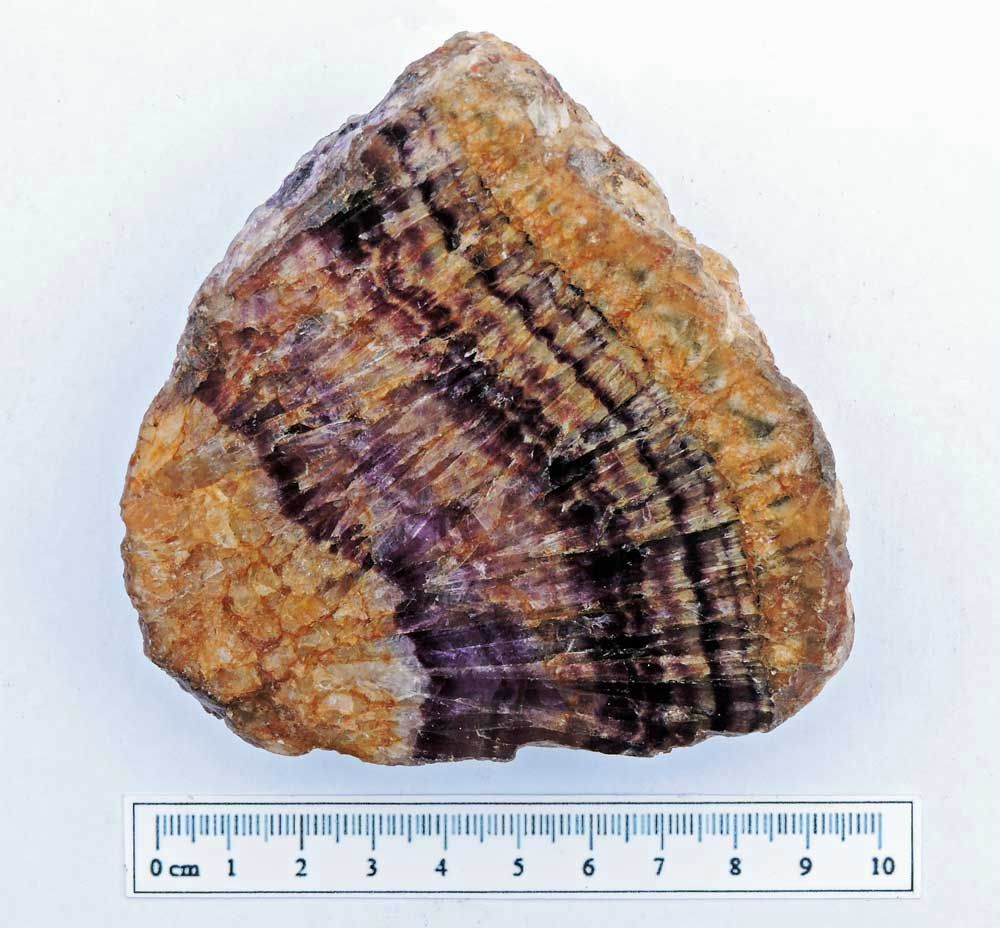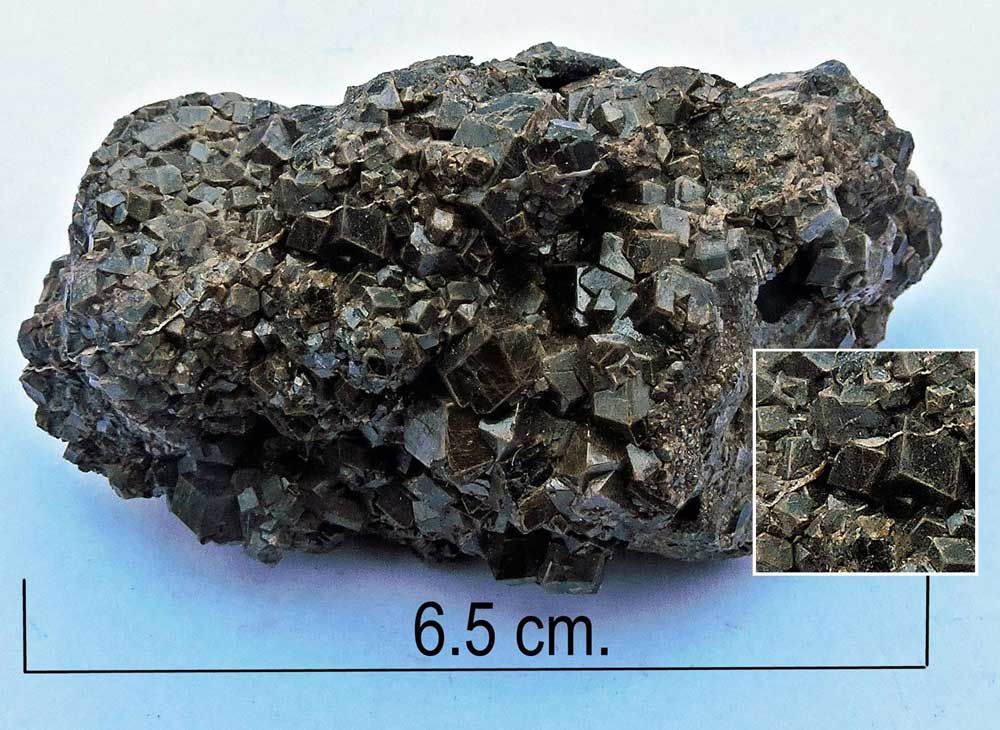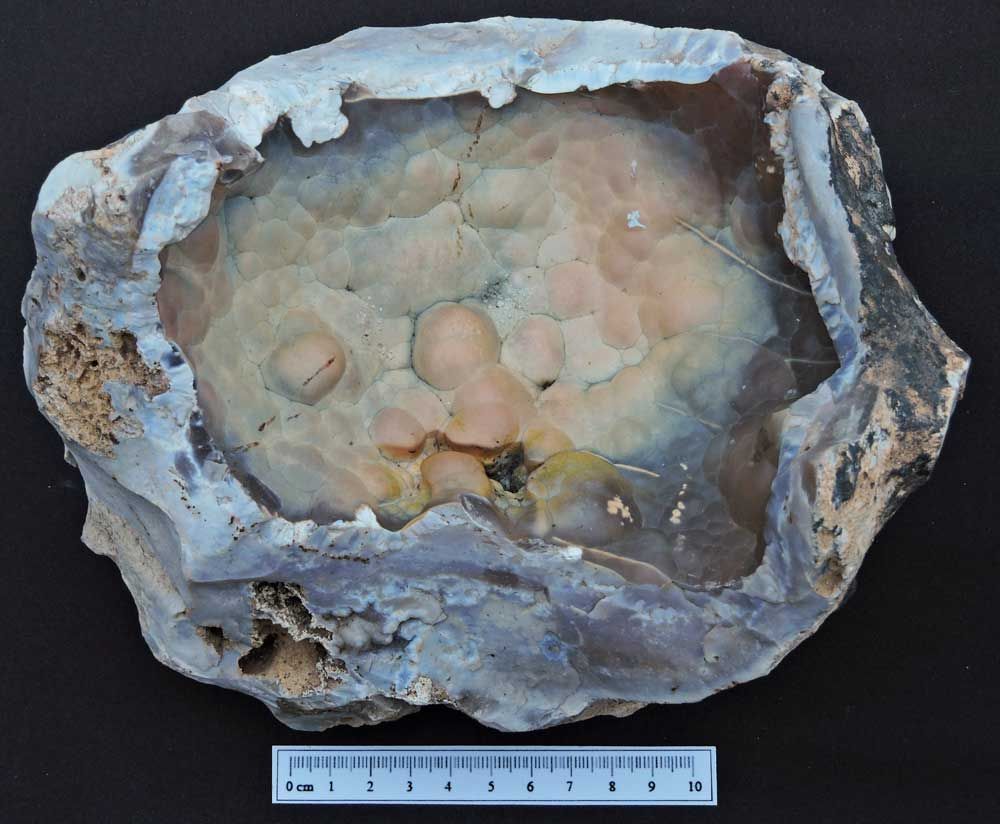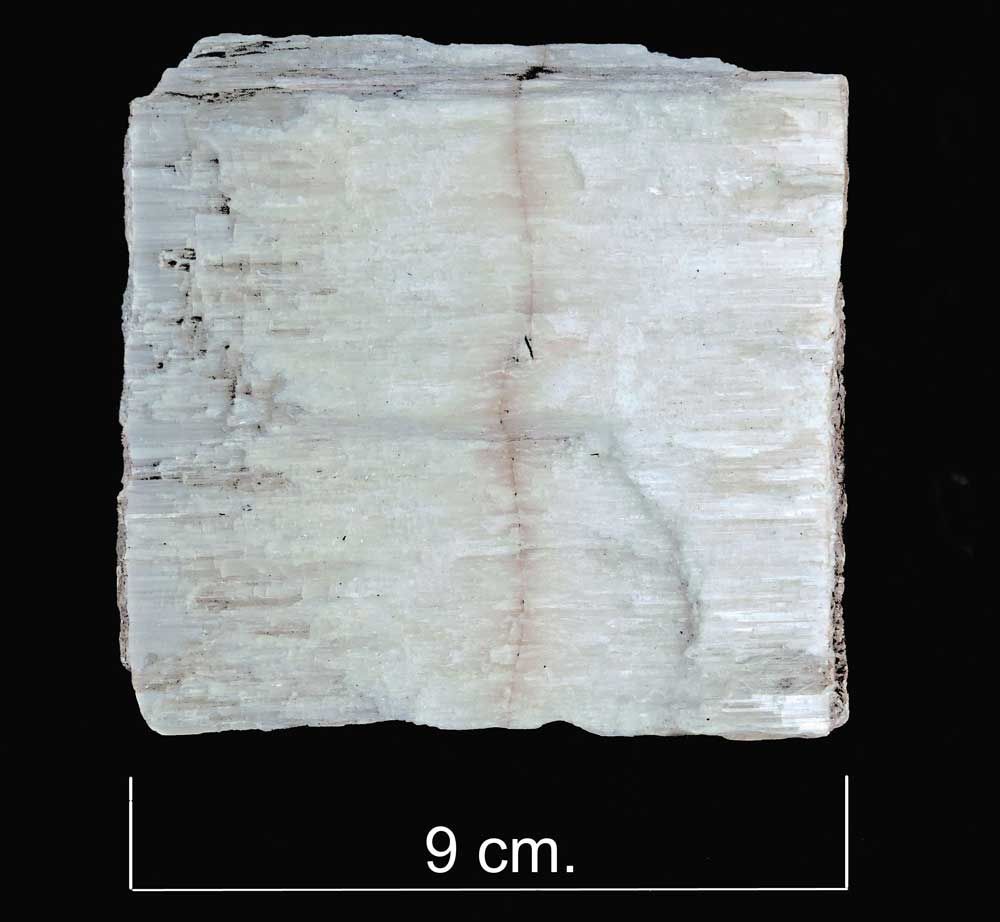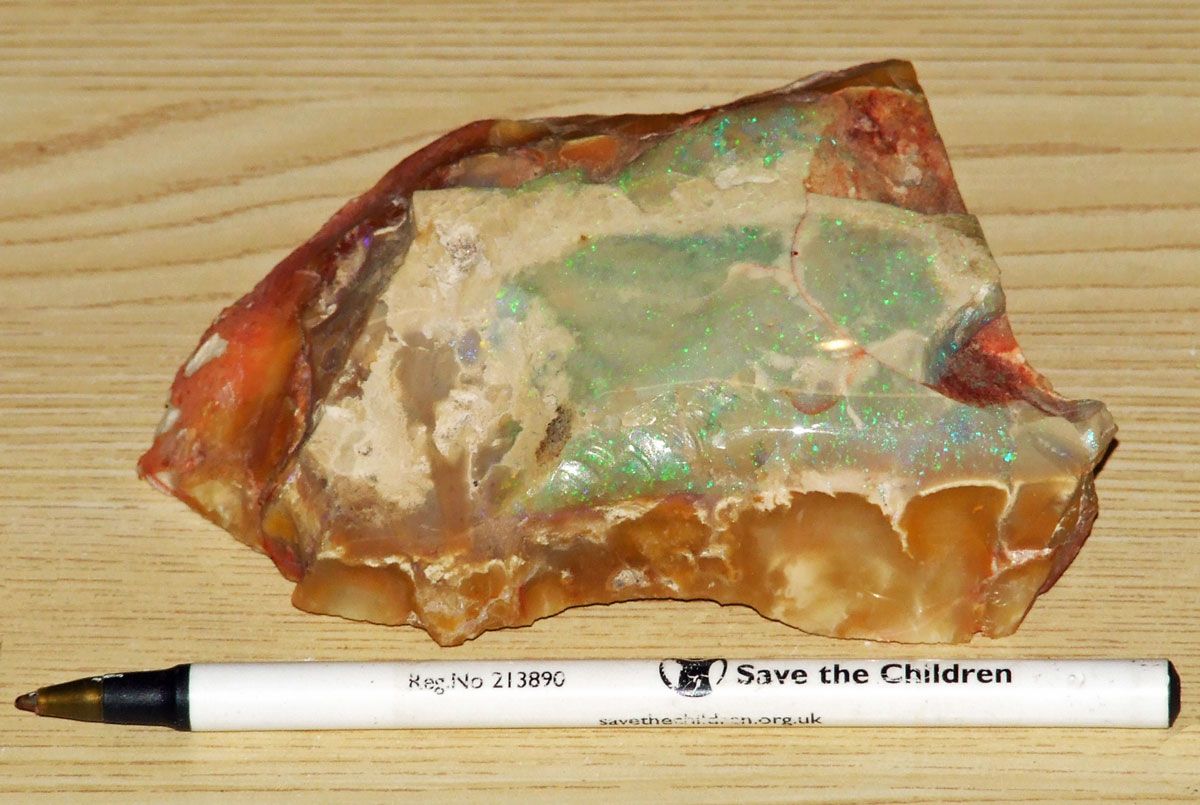
Opal, Andamooka.
Opal, SiO2 . nH2O is a hydrated amorphous form of silica, with a water content between 6% and 10%. Opal is non-crystalline, so it is classed as a mineraloid. Conditions during deposit can determine the gem quality of opal, for instance, if there is undisturbed deposition of identical sized minute spheres of silica, gem quality opal is formed. There is only a hint of "pinfire opal" in the green area of the specimen which was collected in Andamooka, Australia, by the club co-founder, Jim Nicholls.
